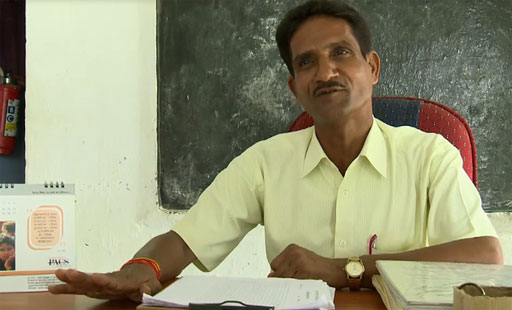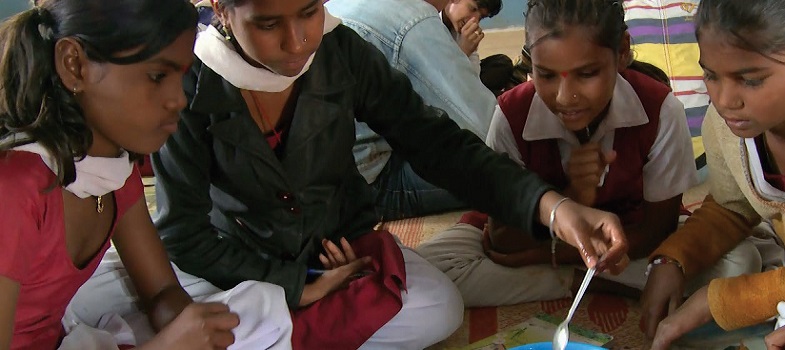2 Thinking about your own learning as a school leader
In order to make the most of new opportunities, school leaders will need to develop a greater range of skills. You have probably become a school leader because you are a good teacher and you are well qualified. Being a leader, however, is very different from the role of teacher. Your role is to manage the day-to-day running of the school and to ensure that, over time, the school provides the best possible education for the students in its community. In this unit you will be introduced to some of the skills and competencies that an effective school leader needs to develop to help the teachers in your school to become more effective.
Pause for thought Think back to when you were at school or when you started your teaching career. Now think ahead about ten years. What will be the most striking differences between schools in ten years’ time and the year in which you started your career? |
Activity 1: Your professional development as a leader

- Using your Learning Diary, write down five words that you would say characterises you as a leader.
- How do you think your teachers view you as their leader? Do they like you? Do they respect your knowledge and skills, not just your position? Why do you think this is the case? How do you demonstrate to your teachers that you are developing as a professional? For example, would they see you as someone who is willing to try new ideas and reflect on their impact?
- Reflecting on your answers to Questions 1 and 2, what do you see as obstacles to your own professional development as a leader?
Discussion
Your responses will be personal to you and your context. However, considering three different types of leader might help you to reflect further on the challenges that you may face:
- The first type may be someone with many years’ experience of leading a school, who feels confident doing so but finds it difficult to show other members of staff that they are still learning and changing their own practice. This may be because they want to appear confident and in charge, and therefore keep professional development as something private and hidden.
- The second type of leader may be someone who is younger and concerned about losing authority if they are seen to have areas for personal development. They may be aware that they have less expertise in the classroom than some of their more senior teachers, but they have a lot to give in a model of leadership that combines enthusiasm, with vision and an understanding of the latest ideas, which at the same time respects the expertise of other teachers.
- Finally, there may be a group of leaders who – despite being willing to develop their practice, and doing so in a transparent way to others – never have the time to devote to such activities. These are leaders who, subconsciously, are modelling an attitude to professional development that may undermine efforts to bring about change in their schools.
The qualities of a good leader are well documented. Table 1 has some suggestions about how these apply to the Indian context. You will return to this analysis in Activity 3.
| Qualities of a good leader | What these might mean in your context |
|---|---|
| Readiness to confront authority | You will need to work with your district education office and other related structures such as the cluster resource centres (CRCs), block resource centres (BRCs), local panchayat and school management committees (SMCs). These provide valuable resources and in many parts of the country still take responsibility for recruiting and deploying teachers. It is important that you manage your relationship with all these institutions and functionaries carefully and sensitively. Confrontation might not be the best approach, but don’t be afraid to take the initiative or do things differently from how they have been done in the past if you think it will help your school. |
| Being prepared to take risks | Culturally this is difficult, because India’s hierarchical structures mean that people feel they need to seek approval for any initiative from a more senior person. However, as long as you are aware of district priorities and the school development plan (SDP), and you have well thought out reasons about why you are making a particular change, you should be able to take risks in your school in order to achieve the improvements you want. |
| Resilience in the face of failure | In many cultures, admitting you have made a mistake or that things are less than perfect is difficult. Managing change is demanding and will not necessarily go smoothly. Every time something does not go exactly as planned, you should regard this as a learning opportunity. Make sure you reflect on and identify the reasons why things have not gone as planned, but don’t be afraid of admitting that you could have done something differently. |
| Confidence in instinct and intuition | You will probably have experience of working as a teacher in different schools. You will be able to use and build on this experience in your role as a school leader. The new aspiration for autonomous schools means that you will have more freedom to be creative and try out new things. |
| Ability to keep in mind the bigger picture | This applies to all leaders. Your role is to establish and communicate a clear vision for your school. All actions and initiatives should be linked to this vision. There is a School Leadership OER that provides practical advice about how to work with others to build a vision for your school. This will help you in formulating the SDP with the SMC members. |
| Moral commitment | The values and beliefs that underpin the NCF 2005, the NCFTE 2009 and the RtE 2009 challenge some traditionally held beliefs. In order to meet the aspirations set out by the government in these documents, you will need to understand the underlying values of these policies and model these in your school and the local community around your school. |
| A sense of timing and the ability to sit back and learn from experience | As you start to evaluate your school, it is possible that you will identify a number of changes that you wish to make. It is important not to try and change too much, too soon. You will need to prioritise and move slowly, taking all the teachers with you. |
Case Study 1: Mrs Aparajeeta enquires about learning
Mrs Aparajeeta is a headteacher in a rural elementary school where the district education officer had told her not to expect much, because ‘they are rural children and find it difficult to learn’. When she started there were 69 students on the role.
On the first day, I was excited to get started, but disappointed to find that only 45 students lined up in the playground. My assistant teacher said that this was good – there were usually only 30 – and that they must have come to see the new school leader. She was right – the next day there were only 32, and some of them ran away after lunch.
After school, I walked into the village and was surprised at how many children there were playing outside, working on market stalls and working in the field. I spoke to a young boy of about nine who was mending punctures in bicycle tyres. I asked him why he did not come to school. He proudly told me that he earned Rs. 100 a day mending tyres and that he did not need to go to school. The things they taught him were not important compared to his work. I talked to some of the parents and found the same attitudes. The children found school uninteresting and not relevant, and their families needed them to work.
I decided I needed to do something about it, so I changed the timetable. I added two ‘activity’ periods – one after assembly in the morning and one after lunch. In those lessons we taught the students practical skills, art and craft. We soon put the things they had made on display. Word got round and more students started coming to school. I was disappointed at how dirty and untidy they looked. I made another visit to the village and explained to a group of mothers that we start the school day with assembly and a prayer. God would be disappointed to see the students looking so dirty and see this as disrespectful. I also made a sash and each day gave the cleanest, smartest-looking students the title ‘Girl of the Day’ and ‘Boy of the Day’.
In the activity periods, I let the students choose what they did. Some still chose reading and writing, and I encouraged them to write on anything – banana leaves became a favourite. I encouraged them to play word games and set sums for each other by writing with a stick in the mud. I let them do their homework on banana leaves or on other materials they could find.
I have been at the school for four years now and have made many changes. There are now 257 children on the role and attendance is regularly 240. They take pride in their appearance and arrive at school ready to learn. I have shown that all students have the ability to learn, once you have managed to motivate them.
Building relationships with the families has been important, but I think the thing that made the greatest difference was changing the curriculum to make it more interesting for the students, even though it meant less time for reading and writing. This gave them the incentive to come to school and to stay all day. As they began to make progress, they began to see that reading, writing and number could be interesting and relevant to their lives.
Activity: Identifying leadership qualities
Reread Table 1, which lists the qualities of a good leader.
With a friend or colleague, analyse Case Study 1 and identify examples of the qualities that Mrs Aparajeeta displayed. Write these in your Learning Diary, or use a highlighter pen or a pencil to underline key phrases.
Discussion
Mrs Aparajeeta set about finding out why her students were not in school by looking at the bigger picture and following her instincts. She showed resilience by not accepting that students did not attend, and set about finding ways to identify the problems and find solutions by working with parents, talking to students and reorganising the day. She improved attendance over time rather than expecting a quick result. She has a strong commitment to her students but understands the financial factors that inhibit their attendance.
Having attempted Activity 2, you might also want to look at videos of school leaders to analyse how far they display the qualities of a good leader in what they talk about.
1 Being a school leader in India
